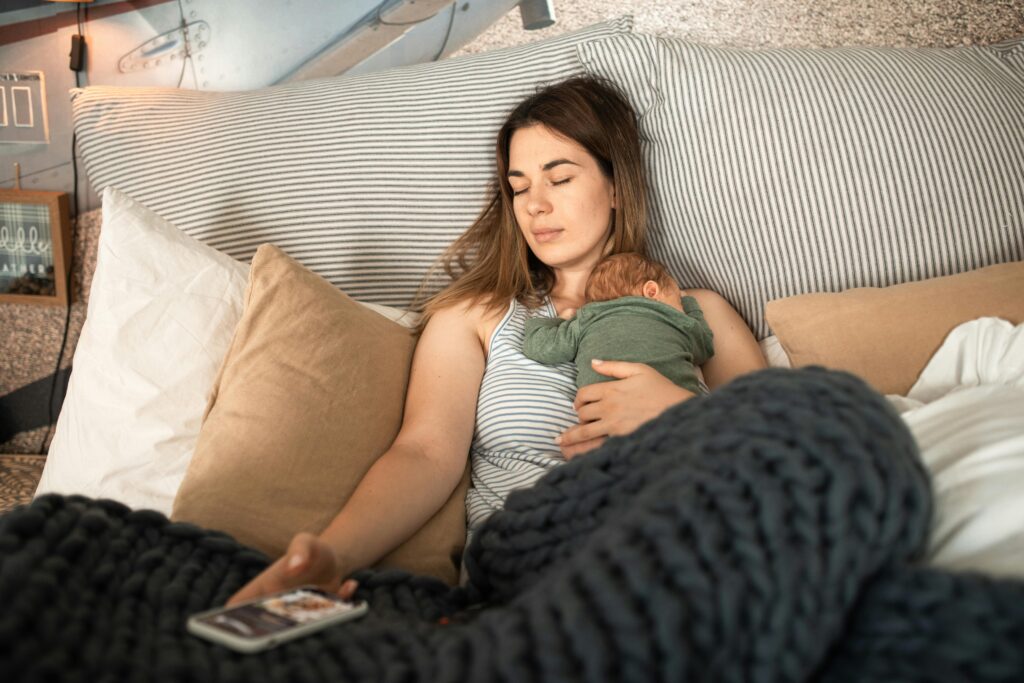
Many families that have been in contact with me over the years are stuck in a contact-napping situation with their baby. They hold, feed rock and transfer their little one as carefully and delicately as possible into their cot, breathe a sigh of relief and sneak out, no more than 3 minutes later, the baby is awake, and crying….and the process starts over.
The reason is this; your baby knows! They are totally aware that they have been moved. This explains why they can nap longer in your arms for the duration of the sleep, or in your bed as you side lie and feed.
One approach is to transition your little one to fall asleep where you would like them to stay asleep to increase sleep duration and avoid sudden startling and crying long term. However, not all families are aligned with this and still enjoy co-sleeping and contact napping, they just need to be able to put their little one down some of the time! Perhaps Your baby is quite young still, and you are not yet ready to commit to sleep changes of this nature.
I have some strategies for you to try to increase the level of success in transferring your asleep baby out of your arms.
1. Darken the room. – An appropriately darkened room is less likely to startle your baby when you transition them out of your arms and onto a separate sleep space.
2. Transition them at a level to your body – trying to put your baby down into the cot which is far lower than your body whilst you bend over the bars awkwardly will increase back strain and your baby will feel like they are falling. Placing them level to you such as on a bed whilst you kneel (obviously you have to stay with them whilst they sleep if you are doing this, for safe sleep purposes), alternately placing them on a floor bed allows you to bend over more easily without the cot bars in the way.
3. Placing your baby on their side (preferably left) This reduces the startle reflex and strong contrast from being asleep on your chest to lying flat on their back. From here you can transition them gently to their back holding pressure on their body for a moment.
4. Using white noise, perhaps even a heartbeat sound, this also helps when you exit the room, they can’t hear you as easily.
5. Consider swaddling before you put them to sleep in your arms. This allows a transfer to the cot or back sleeping to be a bit smoother as they are less likely to startle with the help of a firm arms-down swaddle.
If you need more support in this area or would like a personalised gentle support plan to transition away from contact napping entirely, give me a call or send me an email.
https://www.bubbasleep.com.au/contact/
